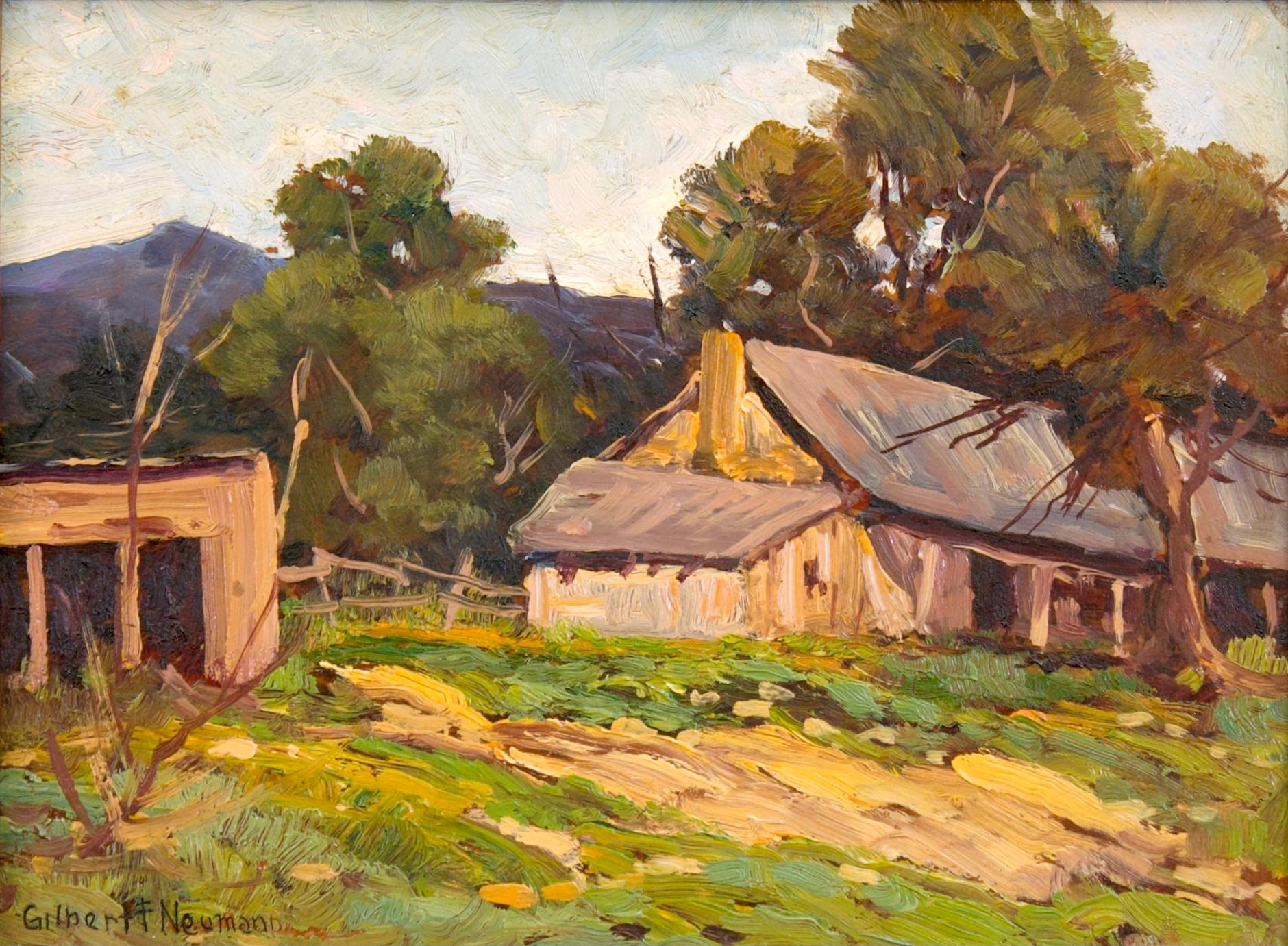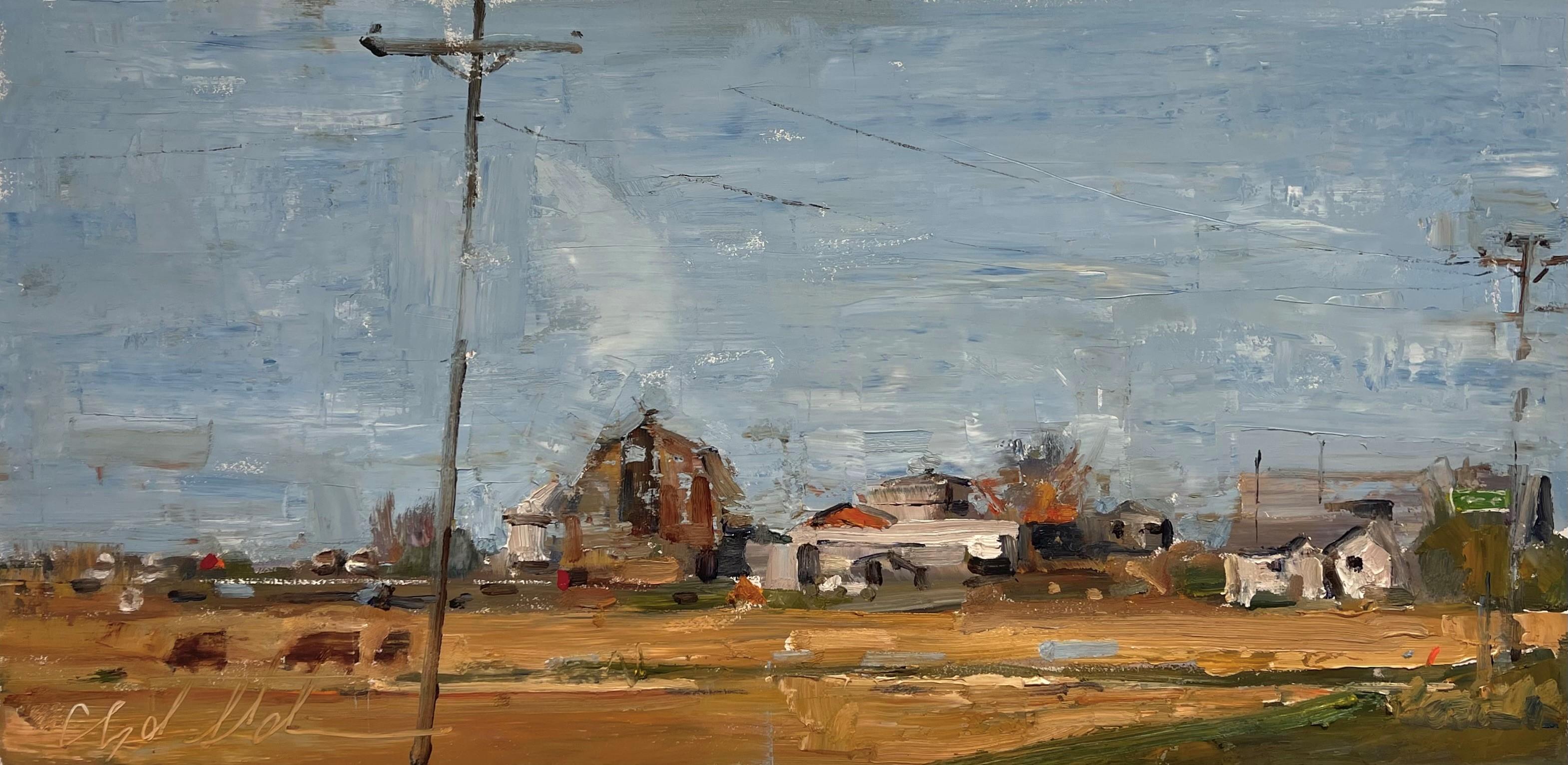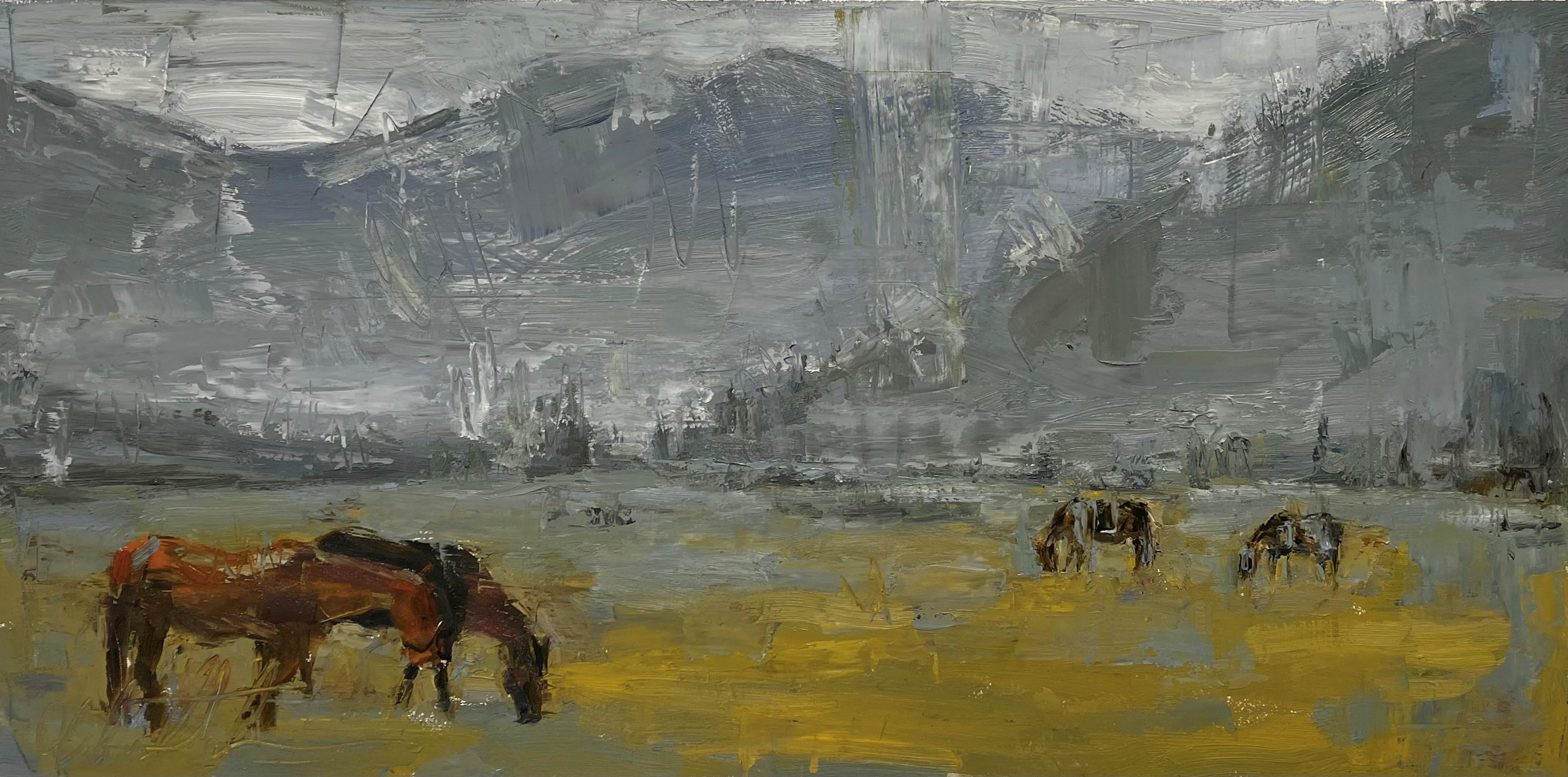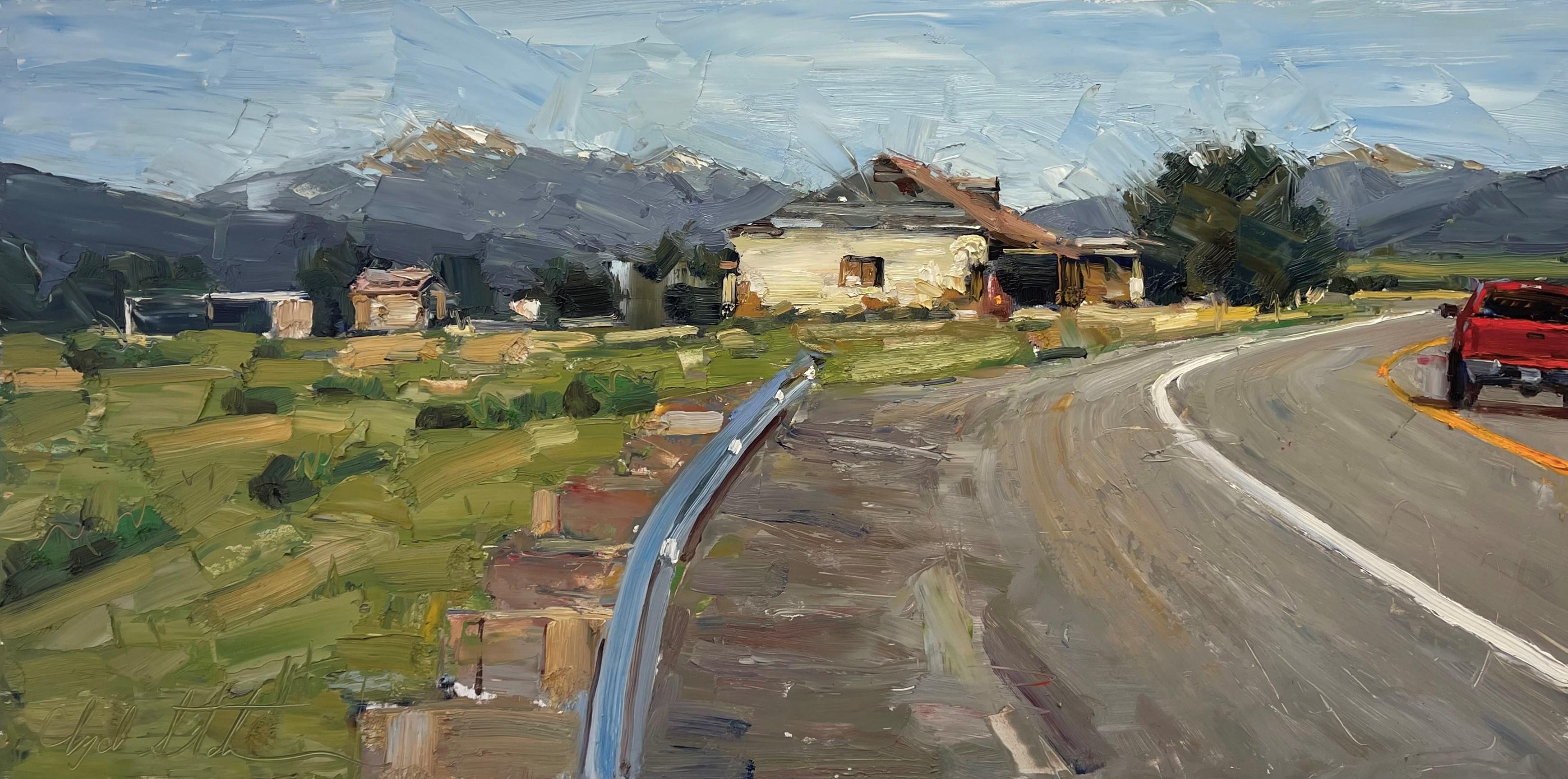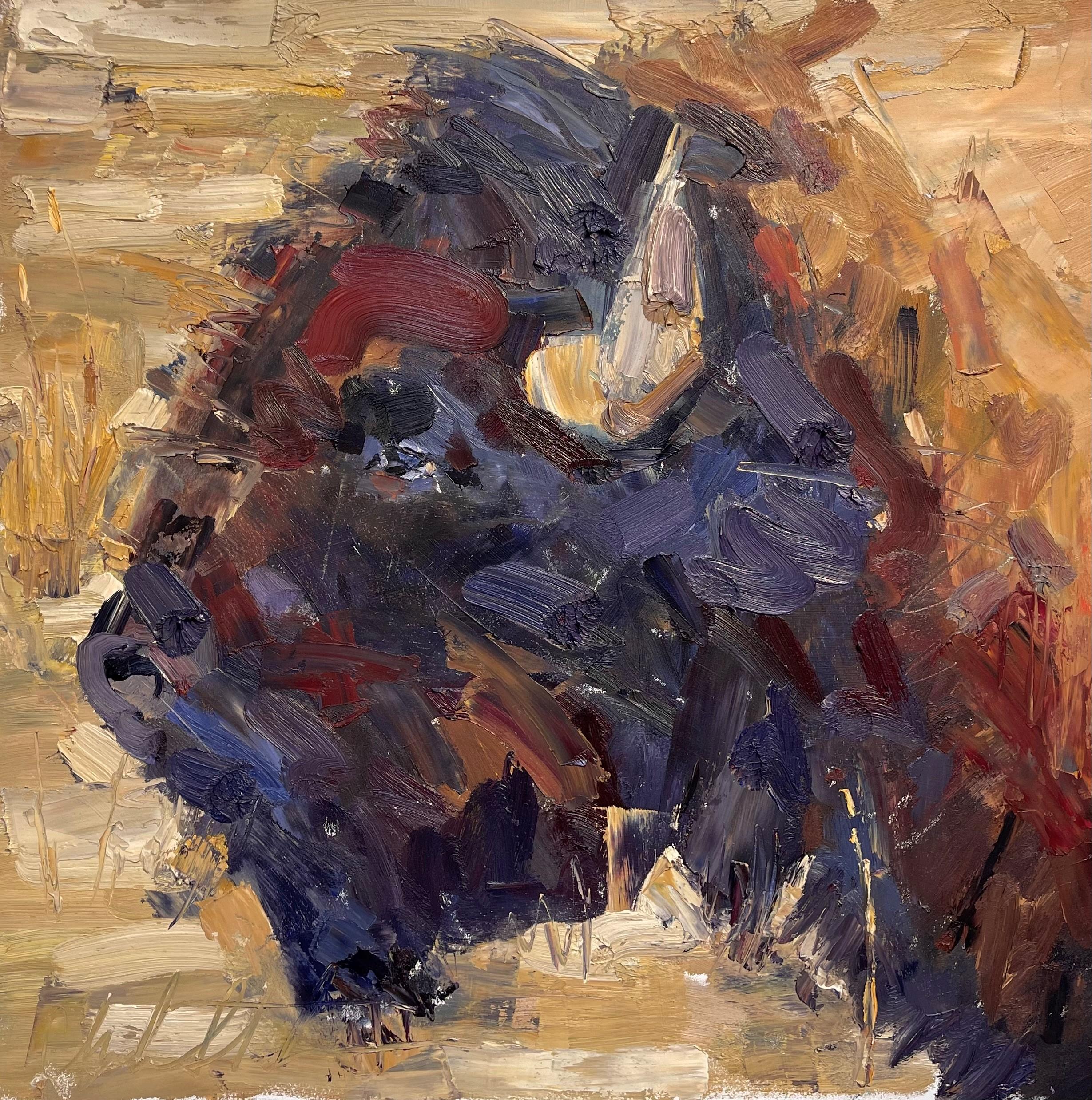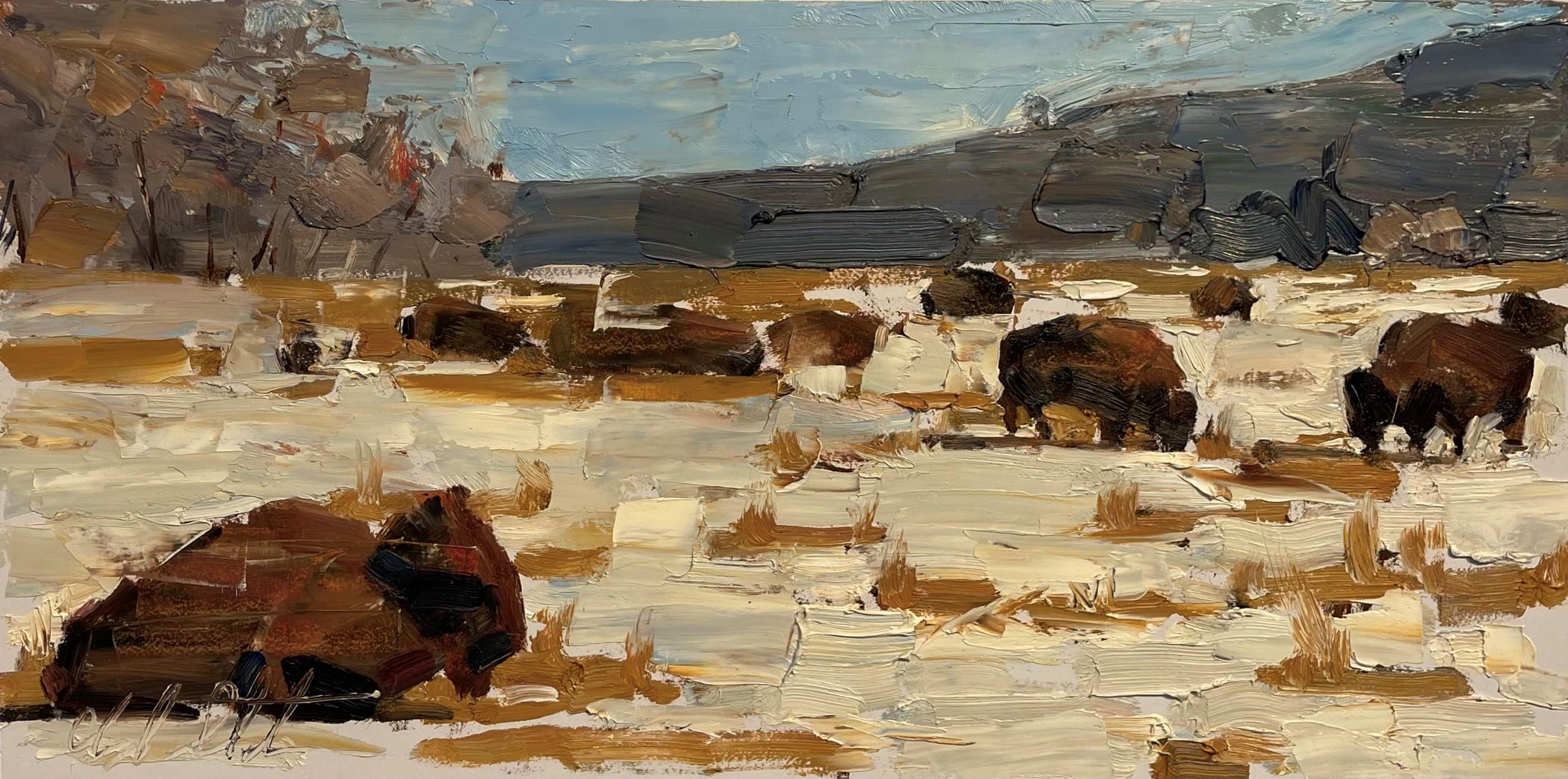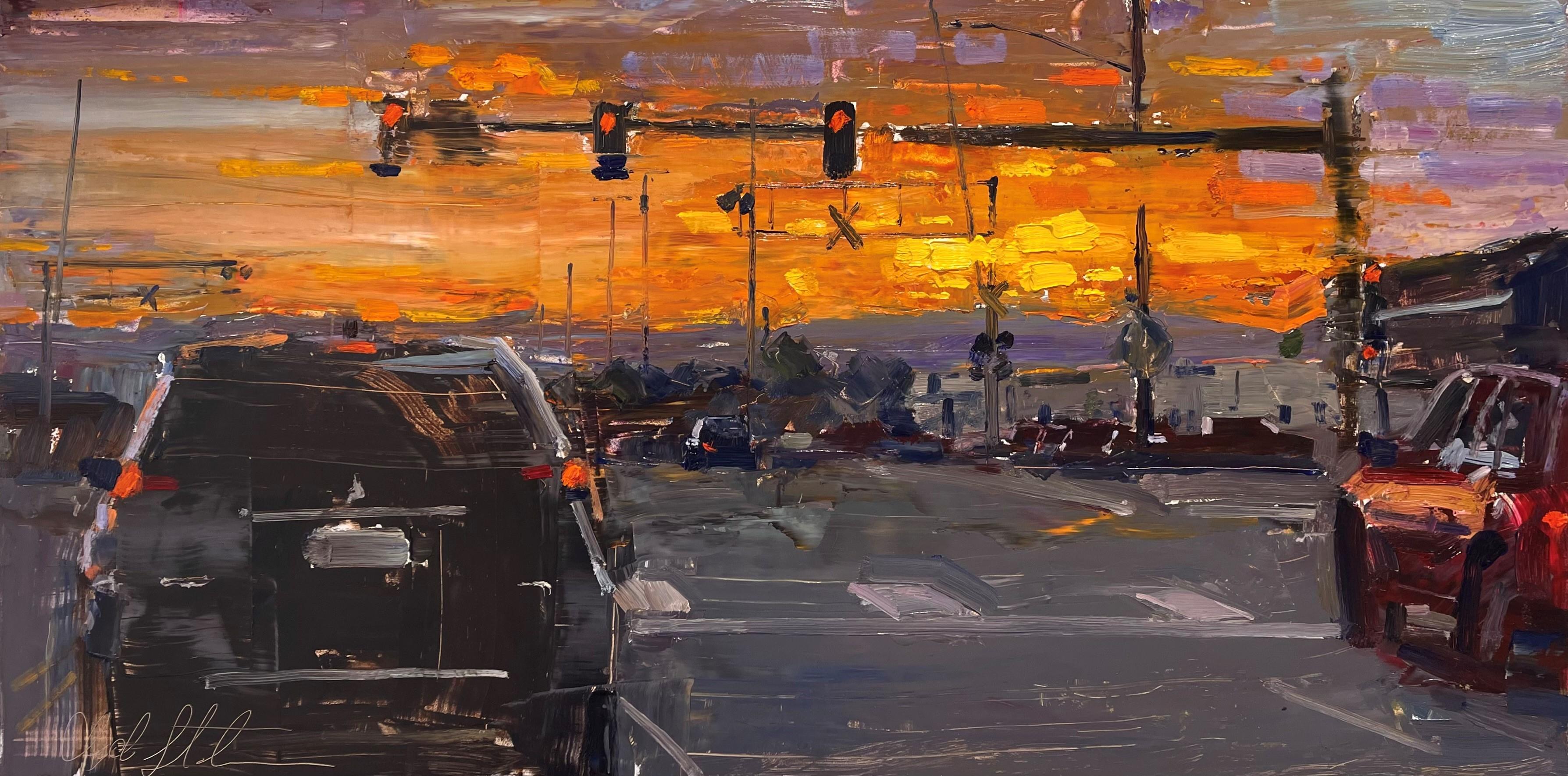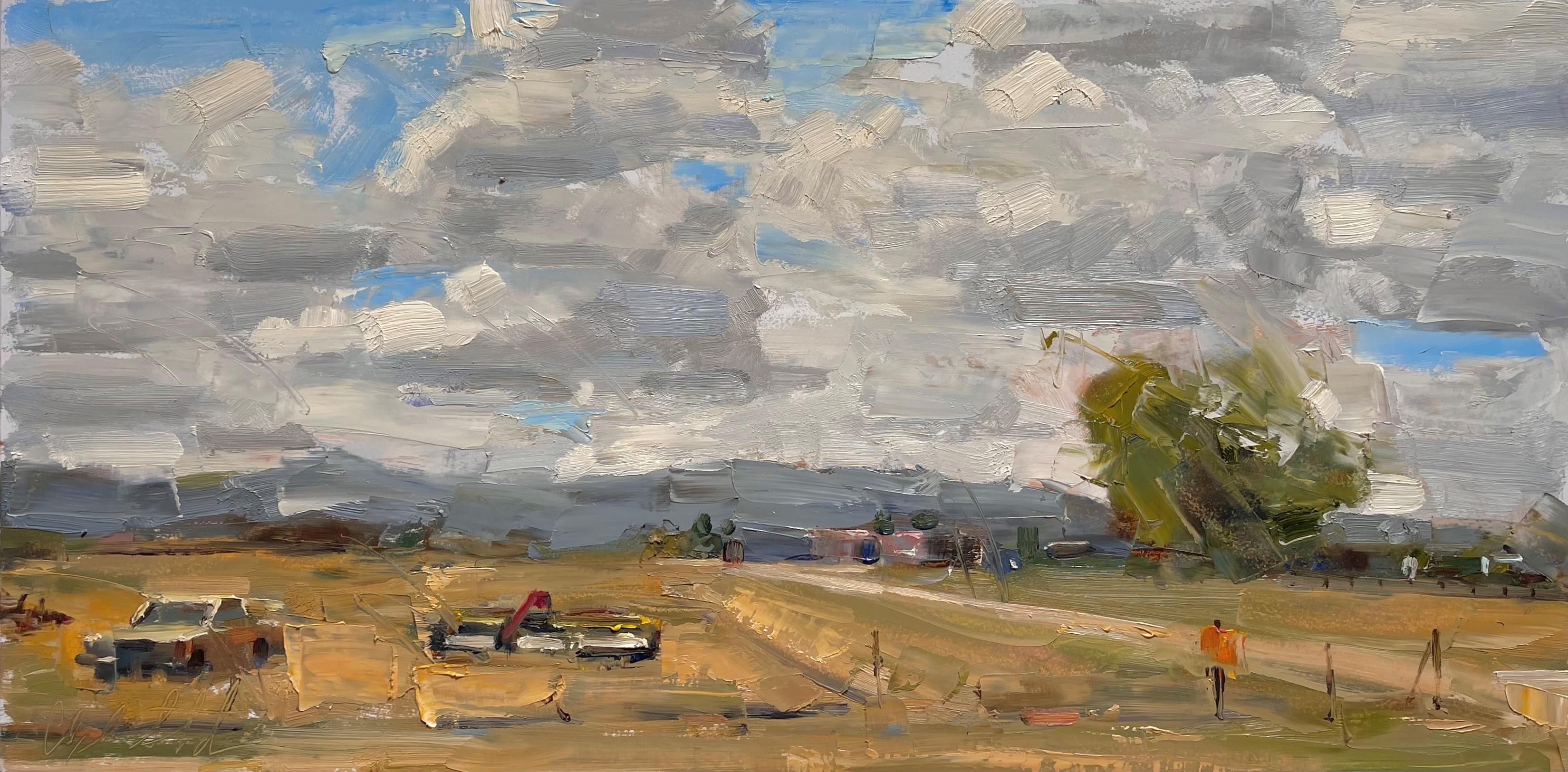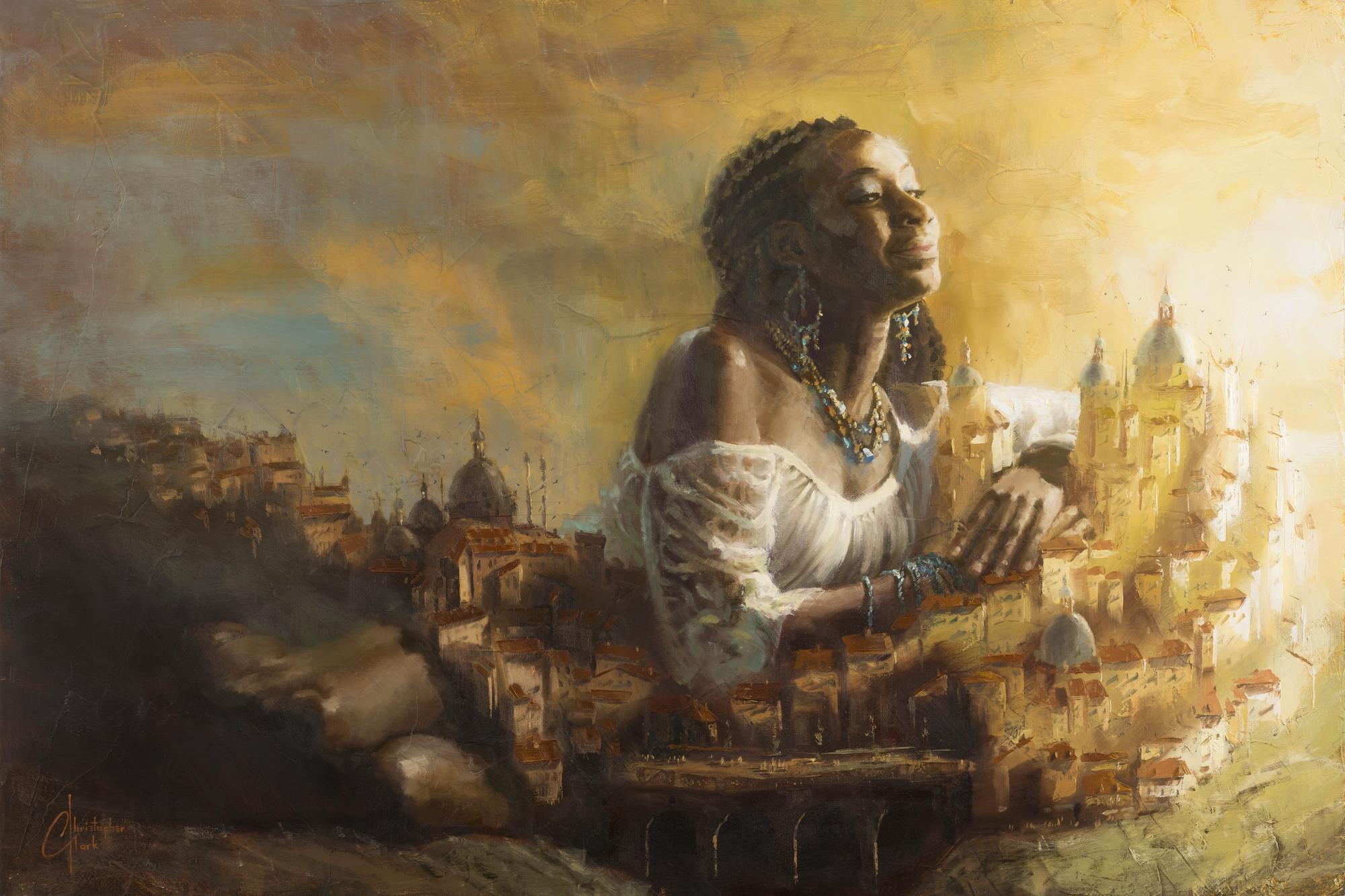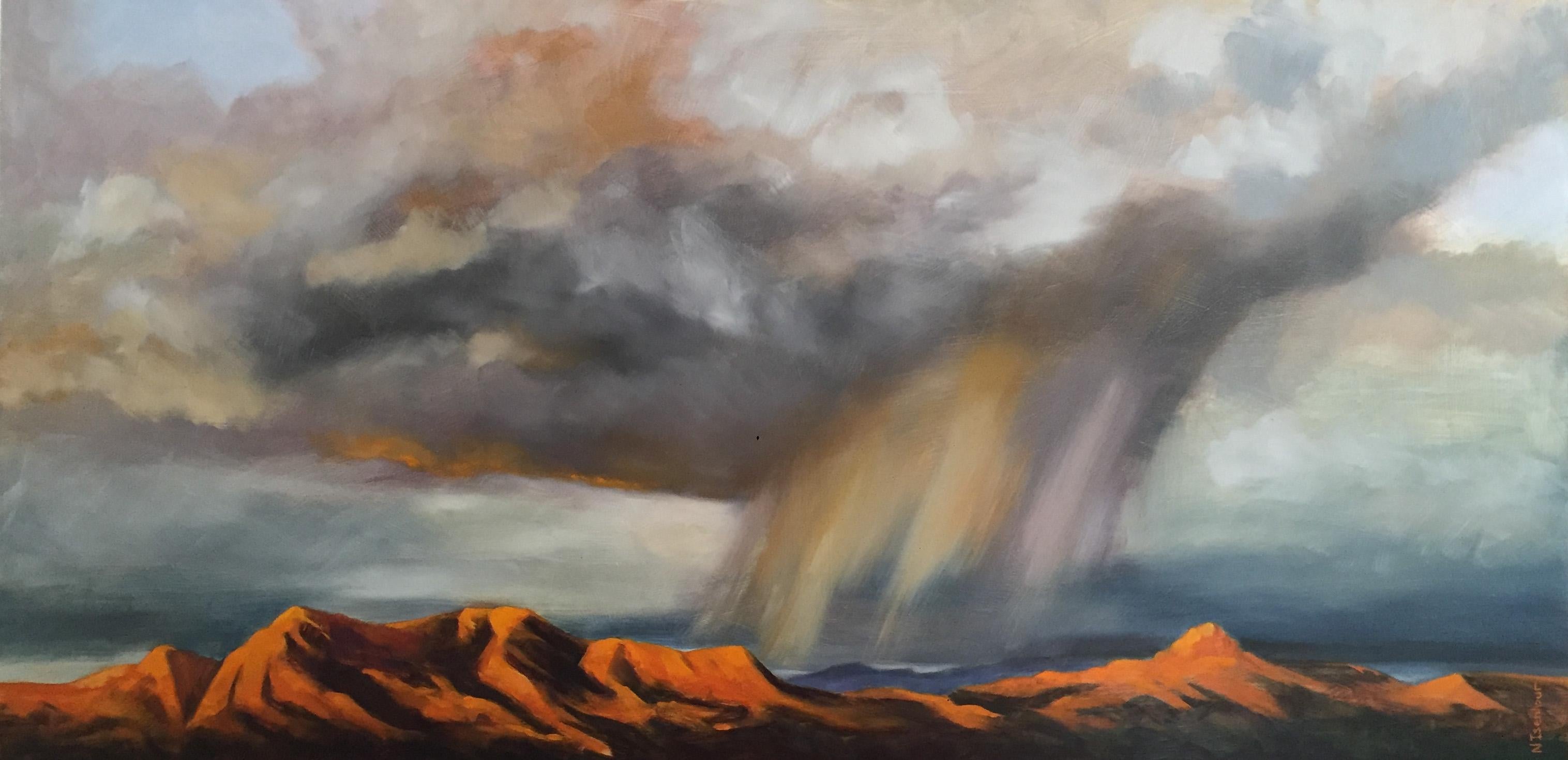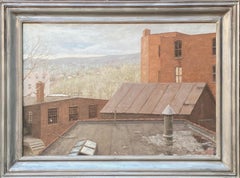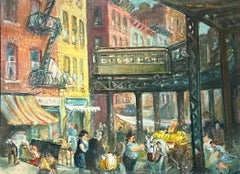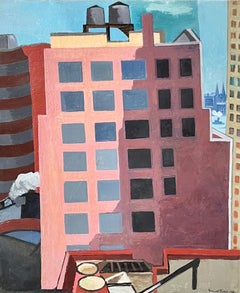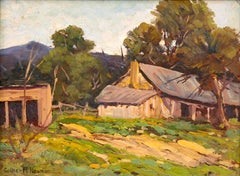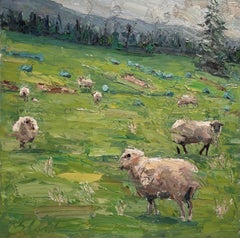"Summer Landscape, " Joseph DeCamp, Boston Ten American Impressionists
View Similar Items
Want more images or videos?
Request additional images or videos from the seller
1 of 10
Joseph Rodefer DeCamp"Summer Landscape, " Joseph DeCamp, Boston Ten American Impressionists
About the Item
- Creator:Joseph Rodefer DeCamp (1858-1923, American)
- Dimensions:Height: 19 in (48.26 cm)Width: 23 in (58.42 cm)
- Medium:
- Movement & Style:
- Period:
- Condition:Cradled panel.
- Gallery Location:New York, NY
- Reference Number:1stDibs: LU115628785272
About the Seller
5.0
Platinum Seller
These expertly vetted sellers are 1stDibs' most experienced sellers and are rated highest by our customers.
Established in 2008
1stDibs seller since 2019
165 sales on 1stDibs
More From This SellerView All
- "Factory Town" Contemporary American Industrial Oil Painting Maine 1987 RealismBy Linden FrederickLocated in New York, NY"Factory Town" Contemporary American Industrial Oil Painting Maine Realism. 20 1/2 x 29 inches. Signed and dated '87. Oil on Panel. Provenance The Cool...Category
1980s Contemporary Landscape Paintings
MaterialsOil, Panel
- NYC EL American Scene Social Realism Mid 20th Century Modern WPA Era FigurativeBy Cecil Crosley BellLocated in New York, NYNYC EL American Scene Social Realism Mid 20th Century Modern WPA Era Figurative Cecil Bell (1906 – 1970) Street Life Under the EL 22 x 30 inches Oil on canvas, c. 1930s Signed upper...Category
1930s American Realist Landscape Paintings
MaterialsCanvas, Oil
- NYC Cityscape American Scene WPA Modern Realism Mid 20th Century ArchitecturalBy Ernest FieneLocated in New York, NYNYC Cityscape American Scene WPA Modern Realism Mid 20th Century Architectural Ernest Fiene (1894-1965) Cityscape 36 x 30 inches Oil on canvas Signed and dated 1930. lower right Provenance Estate of the artist. ACA Galleries, New York Exhibited New York, Frank Rehn Gallery, Changing Old New York, 1931. New York, ACA Galleries, Ernest Fiene: Art of the City, 1925-1955, May 2-23, 1981, n.p., no. 5. BIO Ernest Fiene was born in Elberfeld, Germany in 1894. As a teenager, Fiene immigrated to the United States in 1912. He studied art at the National Academy of Design in New York City from 1914 to 1918, taking day classes with Thomas Maynard and evening classes with Leon Kroll. Fiene continued his studies at the Beaux-Arts Institute of Design in New York from 1916 to 1918, adding classes in printmaking at the Art Students League in 1923. Fiene began his career as an artist in 1919 with his first exhibition of watercolors at the MacDowell Club arranged by his mentor Robert Henri. In 1923 the Whitney Studio Club mounted a large exhibition of his works. The following year he had an exhibition at the New Gallery in New York, which completely sold out all fifty-two works, including paintings, watercolors, drawings, and etchings. With the proceeds of sales from the New Gallery exhibition, Ernest Fiene and his younger brother Paul, a sculptor, built studios in Woodstock, New York in 1925. In the early Twenties Ernest Fiene painted mostly landscapes of Woodstock and both the Ramapo and Hudson River Valleys. The first monograph from the Younger Artists Series was published on Fiene in 1922. Published in Woodstock, the series went on to include Alexander Brook, Peggy Bacon, and Yasuo Kuniyoshi. The book reproduced 1 illustration in color and another 27 reproductions in black and white. Around 1925 Fiene became fascinated with the intensity, excitement, and opportunities for color harmonies New York City offered as a subject. His paintings shifted to urban and industrial themes with architecture, industry, and transportation becoming his subjects. By 1926 Fiene had attracted the dealer Frank K.M. Rehn, who gave him a one-man exhibition that year, which travelled to the Boston Arts Club. C.W. Kraushaar Galleries gave Fiene a one-man exhibition of urban, landscape, portrait, and still life paintings in 1927. Julianna Force, the director of the Whitney Studio Club and first director of the Whitney Museum of American Art, included two of Fiene’s paintings in a fall exhibition in 1928. The Whitney Studio Club showed Fiene’s paintings in a two-man exhibition with Glenn O. Coleman that year and acquired three of Fiene’s paintings. Also in 1928 Fiene became affiliated with Edith Halpert’s Downtown Gallery where he had an exhibition of 20 lithographs in the spring. Fiene sold his house in Woodstock in 1928 to spend more of his time in New York City. With so many successful exhibitions, Fiene returned to Paris in 1928-29 where he rented Jules Pascin's studio and studied at the Académie de la Grande Chaumière. In France, Fiene painted both landscape and urban subjects developed from ideas influenced by Cubist geometry and the use of flat areas of broad color. Upon returning to New York in 1930, Fiene used this new approach to continue to paint New York skyscraper and waterfront subjects, as well as to begin a series of paintings on changing old New York based on the excavations for Radio City Music Hall and the construction of the Empire State Building. Frank K.M. Rehn Galleries exhibited this series, titled “Changing Old New York,” in 1931. Fiene also has solo exhibitions at Rehn Galleries in 1930 and 1932. Fiene’s oil paintings are exhibited at the Chicago Arts Club in 1930 as well. Fiene was included in the Museum of Modern Art’s exhibition Painting and Sculpture by Living Americans in December of 1931. Visiting New York, Henri Matisse saw the exhibition and called Fiene’s Razing Buildings, West 49th Street the finest painting he had seen in New York. Fiene had two mural studies from his Mechanical Progress series exhibited at the Museum of Modern Art’s exhibition Murals by American Painters and Photographers in 1932. Fiene sent View from my Window which depicts Fiene working on a lithograph stone while looking out his window to the newly completed Empire State Building to the Carnegie International in 1931. In 1932 Fiene participated in the first Biennial of American Painting at the Whitney Museum and his prints were included in exhibitions at the Downtown Gallery and the Wehye Gallery. In the same year, Fiene was awarded a Guggenheim fellowship to further study mural painting in Florence, Italy. On his return from Italy in 1933 Fiene re-engaged himself in New York City life and won several public and private mural projects. Fiene resumed his active exhibition schedule, participating in two group exhibitions at the Whitney Museum and a one-man exhibition of recent paintings at the Downtown Gallery in January 1934. In 1933 he purchased a farm in Southbury, Connecticut, which added Connecticut scenes to his landscape subjects. This was also the year Fiene began to spend summers on Monhegan Island, Maine, where he painted seascapes, harbor scenes, and still lifes. Fiene’s landscape paintings attracted numerous commissions as part of the American Scene movement. Through the fall and winter of 1935-36, Fiene took an extended sketching trip through the urban, industrial, and farming areas of Pennsylvania and West Virginia. Most of the twenty-four Pennsylvania urban and rural paintings...Category
1930s American Modern Landscape Paintings
MaterialsCanvas, Oil
- Bathers 1940s Mid 20th Century American Scene Social Realism WPA Modern AshcanLocated in New York, NYBathers 1940s Mid 20th Century American Scene Social Realism WPA Modern Ashcan Marion Gilmore (1909-1984) Bathers 15 1/2 x 19 1/2 inches oil on canvas boar...Category
1940s American Realist Figurative Paintings
MaterialsOil, Board
- "Cars, Buildings People" Contemporary Outsider Folk Art African American UrbanBy Purvis YoungLocated in New York, NY"Cars, Buildings People" Contemporary Outsider Folk Art African American Urban The painting measures 65 x 48 inches. We love that in the middle of ...Category
1990s Outsider Art Landscape Paintings
MaterialsMasonite, Oil
- "Coney Island" Brooklyn NYC Amusement Park Mid-century American Scene WPA ModernBy Ludwig Bemelmans, 1898-1962Located in New York, NY"Coney Island" Brooklyn NYC Amusement Park Mid-century American Scene WPA Modern Ludwig Bemelmans (1898 – 1962), “Coney Island" 35 x 27 inches Oil on board Signed lower left Origin...Category
1940s American Modern Landscape Paintings
MaterialsOil, Board
You May Also Like
- Old House, Built in 1848By Gilbert NeumannLocated in Austin, TX"Old House, Built in 1848" by painter Gilbert F. Neumann Medium: Oil paint on panel Size: 9 x 12 inches Frame Size: 14 x 18.5 inches A nostalgic painting of ...Category
20th Century American Impressionist Landscape Paintings
MaterialsPanel, Oil
- "Country Road" Oil PaintingLocated in Denver, COClyde Steadman's "Country Road" is an original, handmade oil painting that depicts an impasto painting of a pastoral setting.Category
2010s American Impressionist Figurative Paintings
MaterialsOil, Panel
- "Sheepish" Oil PaintingLocated in Denver, COClyde Steadman's "Sheepish" is an original, handmade oil painting that depicts an impasto painting of a sheep gathered on a green hillside.Category
2010s American Impressionist Animal Paintings
MaterialsOil, Panel
- "Cold on the Plain" Oil PaintingLocated in Denver, COClyde Steadman's "Cold on the Plain" is an original, handmade oil painting that depicts an impasto painting of horses grazing in a pastoral setting with m...Category
2010s American Impressionist Animal Paintings
MaterialsOil, Panel
- "Going Round the Bend" Oil PaintingLocated in Denver, COClyde Steadman's "Going Round the Bend" is an original, handmade oil painting that depicts an impasto painting of a two lane road going around the bend with mountains in the backgrou...Category
2010s American Impressionist Figurative Paintings
MaterialsOil, Panel
- "As you Wish" Oil PaintingLocated in Denver, COClyde Steadman's "As you Wish" is an original, handmade oil painting that depicts an impasto painting of a bison in profile.Category
2010s American Impressionist Animal Paintings
MaterialsOil, Panel
Recently Viewed
View AllMore Ways To Browse
California 18th
Cobblestones Used
French Seaside Paintings
Paintings Of Yosemite
Oil Paintings With Palm Trees
Western California Mountain Landscape
George Ford
Racines Collections
Winter Farm
Men In Boat
E M Washington
Autumn Leaf
Johannes Oil Painting
Irish Coast
May Stevens
Provencal Painting
Riviera Oil Painting
Dutch Landscape Oil Painting Small
